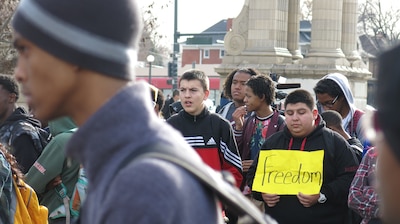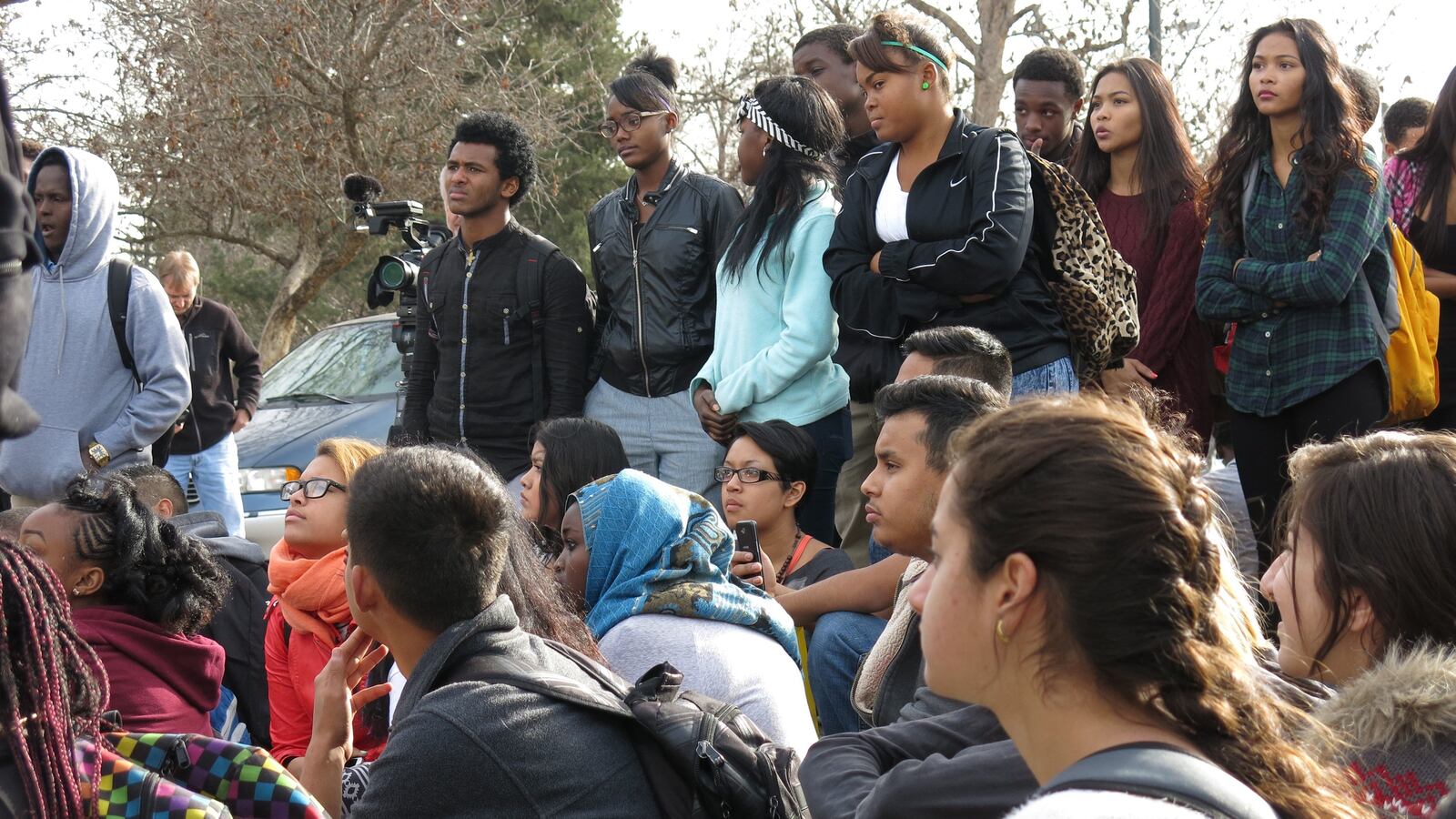On the fourth consecutive school day of walk-outs by Denver Public School students, district officials moved forward with plans to host a series of student forums about race and social justice.
One of the first forums was this afternoon at South High School, where hundreds of students walked out of class earlier today.
Superintendent Tom Boasberg sent a letter to parents and community members announcing plans to hold conversations about race and social justice with students late last week. He said the district had also provided guidance to school leaders on how to discuss protests and Ferguson in their classrooms.
The letter quotes Bill de La Cruz, DPS’s Director of Equity and Inclusion: “We can do three things around race: Not talk about it and act like it doesn’t affect us, wait for a problem and react to it, or we can get past our fear and just have the conversation and talk about the impact of race. We all have a responsibility in shifting race relations, and we need to work together to create a dialogue that’s safe.”
Denver Mayor Michael Hancock announced today that he will also lead a series of conversations about race throughout the city, starting in December.
Hundreds of students have been involved in the protests. East High School students organized a walk-out out last Wednesday. Since then, students at Lincoln, Montbello, George Washington, and North high schools and the Denver School of the Arts have also walked out of school.
The students are joining protesters across the country who have raised concerns about racial discrimination and police brutality, spurred by a grand jury’s decision not to indict a police officer in the shooting of an unarmed black teenager in Ferguson, Mo.
“We have conveyed very strongly to our students the importance of all our students conducting themselves in a respectful and thoughtful manner as we deal with these challenging conversations,” Boasberg wrote in his letter to parents. “But we also have made it clear that we at DPS believe that our students’ opinions matter.”
The district forum at South this afternoon included representatives from the police department and the school system. Students were to talk about today’s protest and the issues that prompted it.
At a similar event last week at East, Boasberg said that the district wanted to make sure “students stay safe and that these remain learning experiences.”
Across the district, schools where students have not walked out are also responding to both the decision in Ferguson and the protests. One school hosted an assembly last Friday where students could air their concerns. And students at Manual High School are planning an event where they will discuss and debate issues about social justice and Ferguson later this week.
Some students at Denver School of the Arts walked out today despite a letter to students and families from Principal William Kohut that encouraged them to stay in class, saying that the school will have an event about social justice and inequity when school returns in January.
The South High School protest today was the second to take an unexpected turn. South students had planned to walk to Washington Park this morning, but instead continued past the park to first the state capitol, and then to East High School.
Students at East also took their protest off of school grounds. Several police officers who had accompanied the students were hit by a vehicle. East students later sent flowers to one of the injured officers.
No one was injured today. The South students were accompanied by their principal, district staff, police and Americorps volunteers affiliated with the district. A fleet of school buses followed them from the park to the capitol and finally to East.

Once they reached East, South students encountered a separate planned press event organized by two local activists, Alvertis Simmons and Reginald Holmes, a pastor at New Covenant Christian Church, who were at the school to comment on last week’s protests at East. Simmons and Holmes spoke to the students through a bullhorn, encouraging them to stay engaged after the walk-out and to respect police officers even while criticizing the system.
The students then dispersed to school buses—some clearly glad to be off of their feet after close to two hours and five miles of marching.
How are you and your students addressing race and police brutality in the classroom?

